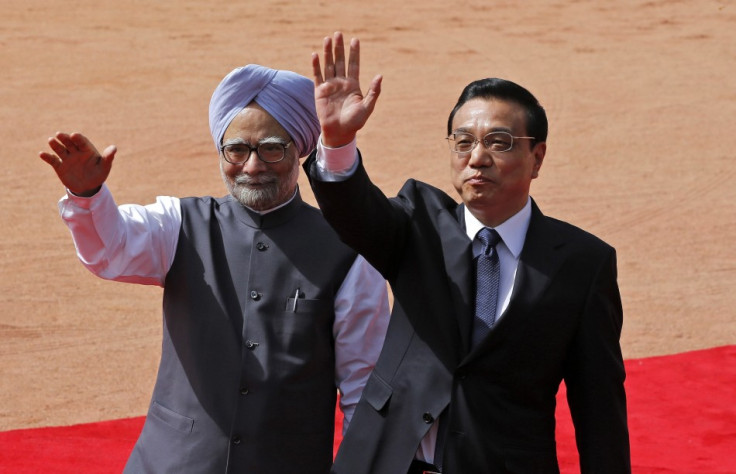India and China Envisage Economic Corridor to Boost Bilateral Trade

Trade talks dominated the second day of China's Premier Li Keqiang's visit to India and both the sides agreed on a number of measures to boost bilateral trade.
According to a report in China state run Xinhua news agency, both the sides agreed on the joint development of large-scale cooperation projects, called for economic corridor among China, India, Myanmar and Bangladesh so as to push for closer links between the two major markets.
China is already one of the largest trading partners of India with trade amounted to $66bn (£43.4bn/€51bn) for 2012. The two countries have agreed to aim for $100bn trade target for 2015.
"... development of prosperity of the world cannot be a reality without the cooperation and simultaneous development of China and India," said premier Li Keqiang after inspecting a guard of honour at the presidential palace in New Delhi.
Both the leaders have also discussed greater cooperation in civil nuclear fields and measures to curb border incursions, a major worry for India.
"Discussions between the two sides have achieved multiple, significant outcomes," said Li, according to a report from India's Press Trust of India.
Trade Talks Outshine Border Flare-ups
India and China have signed eight agreements on the second day of Li's maiden visit to India.
Li said that that the two countries have "the will, wisdom and capability" to create "new engine of the world economy".
A large delegation of Chinese business leaders and representatives from the banking and telecommunications sectors are accompanying the Chinese premier.
Apart from officials from Huawei and ZTE, The business delegation also includes representatives from the Aviation Industry Corporation of China, China Harbour Engineering Company Group, China Development Bank Corp (CDC) and the Industrial and Commercial Bank of China (ICBC).
In addition to major deals in the defense and maritime fields, Li is also seeking currency settlements in yuan as the country is promoting broader use of its currency in global trade.
China already has currency-swap agreements with 19 countries that include Hong Kong, Australia, Turkey, Brazil and South Korea and the central bank is fast expanding its swap agreements.
In Europe, the Bank of England has become the first central bank in the region to sign a currency-swap agreement with the People's Bank of China.
However, analysts are skeptical of the rise of yuan as a global currency in the short run because of the government control over it.
The yuan is allowed to fluctuate a maximum of 1% on either side of the rate set by the People's Bank of China to prevent a breach of trading band.
Recently, the country's currency regulator has stepped up monitoring of capital inflows and outflows to prevent speculative funds from entering the country, which China believes is pushing the yuan to record highs.
The yuan climbed to 6.1401 per dollar in early trades in Shanghai, near its 19-year high of 6.238 against the greenback.
Border Disputes
China's new leader has chosen India as his first overseas destination after assuming office despite a recent flare-up in border issues in the disputed Ladakh region of eastern Kashmir. The Chinese prime minister is also visiting Pakistan, Switzerland and Germany.
India alleged that Chinese troops had penetrated 20 kms (12 miles) into its territory, which led to a three-week standoff between Indian and Chinese forces. In early May, both the sides agreed to withdraw, giving a breather to Singh, to outlive the domestic political pressure to call off Li's visit.
"I want this visit to show the whole world that the mutual political trust between China and India is rising, practical cooperation is expanding and there are more common interests than differences," said Li earlier.
"Starting yesterday evening, Premier Li and I have had wide-ranging and candid discussions covering all matters of mutual interest and concern," said Singh.
"We have had our differences..., but over the last 25 years, we have steadily built a mutually beneficial relationship"
Both the counties share a 4,000 km long border and fought a short but bloody war 50 years ago, in 1962.
© Copyright IBTimes 2024. All rights reserved.





